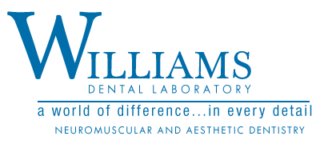Tips for Shade Communication with the Dental Laboratory
Ever have that patient walk into the practice with a bad single central crown? What about the patients that walk in with four 
Challenging issues and frustration may occur from the dentist when not taking the adequate time or failing to have the right equipment or technology to color match. It is never fun to have a patient return to the office for multiple shade matching appointments. Can you see the profit, in that case, going down the drain? Is there any profit in a single central? Every return appointment is costing you valuable chair time, patient satisfaction, and compromising the result. At some point, your patient will just settle, even though their crown is not exact, or they will ask for their money back. Both outcomes are bad.
Patients invest their time, trust, and money in their new smile and they deserve the best results possible. Shade selection should always be a collaborative effort at the chair. Your team members should always look at shade selections, as well as you, to allow for more than one set of eyes to help choose the best shade, especially since people see things differently, and the perfect match is the ultimate goal.
Many dentists can recall the days when VITA A3 was the go to shade for most patients, and that was good enough. Unfortunately, teeth are not identical to the VITA shade guide, and a single shade does not always match a tooth that varies in shade. Teeth are much more complex since dentin and enamel have many characteristics. So, if we are trying to achieve natural-looking accuracy, more effort should be put into the process of shade selection. A dentist does not need to be an expert in selecting the correct shade but rather have a good digital SLR camera, and the ability to communicate with the lab via email.
Williams Dental Lab’s suggested steps for communicating shade:
Photographs:
Digital photography is one of the best ways to communicate the shade to the lab. Emailing in a timely fashion, and sending a USB drive or CD to the lab, are all modern ways to communicate. Having a digital SLR camera with flash and a macro lens is probably one of the best investments an office could ever make.
Use Camera Properly:
Always ensure the shade tab and lettering (A1, B1) are completely visible. It is important that you hold the shade tab in the same orientation as the natural teeth so that the light reflects in the same way. Try to place the incisal edge of the shade tab alongside the incisal edge of the tooth. Also, the shade should be taken as quickly as possible to eliminate retinal fatigue.
Use Multiple Shade Tabs in Photos:
There will be more than one shade tab that looks good. Providing the lab with photos of various shade tabs will allow the lab technician more insight and the chance to compare elements of color between the two pictures. It is very important to include a stump-prep shade (color of the prepared tooth) if you are prescribing an all-ceramic restoration.
Details:
When reproducing natural teeth, there is always more than one shade involved. Considering the details in texture, line angles, and characterization, you want the depth of the shade to be distributed throughout the tooth, as well as any indents and craze lines in the tooth. Some might think this can be conveyed through detailed drawings, but it is best to capture a 1:1 close up with your digital camera and macro lens. This image should be in addition to your shade tab photos.
Taking an accurate shade is extremely important in lab communication. The shade prescribed will be favorable or detrimental to the outcome of the restoration(s). Shade analysis can be challenging yet extremely rewarding, but most of all it is a necessity in this day and age of aesthetic dentistry. For more information about shade matching call Williams Dental Laboratory located in Gilroy, CA at 800.713.5390.

